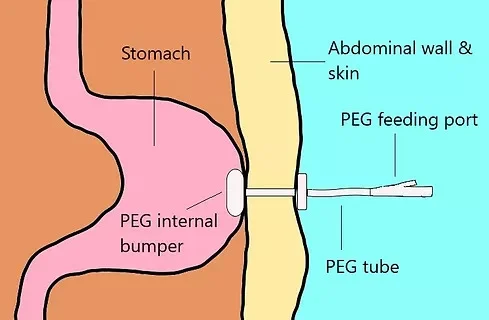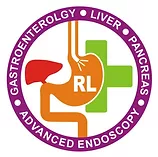PERCUTANEOUS ENDOSCOPIC GASTROSTOMY (PEG)

What is a PEG?
PEG stands for percutaneous endoscopic gastrostomy, a procedure in which a flexible feeding tube is placed through the abdominal wall and into the stomach. PEG allows nutrition, fluids and/or medications to be put directly into the stomach, bypassing the mouth and oesophagus. This brochure will give you a basic understanding of the procedure – how it’s performed, how it can help, and what side effects you might experience.
Who can benefit from a PEG?
Patients who have difficulty swallowing, problems with their appetite or an inability to take adequate nutrition through the mouth can benefit from this procedure.
How should I care for the PEG tube?
A dressing will be placed on the PEG site following the procedure. This dressing is usually removed after one or two days. After that, you should clean the site once a day with diluted soap and water and keep the site dry between cleansings. No special dressing or covering is needed.
How are feedings given? Can I still eat and drink?
Specialized liquid nutrition, as well as fluids, are given through the PEG tube. If the PEG tube is placed because of swallowing difficulty (e.g., after a stroke), there will still be restrictions on oral intake. Although a few PEG patients may continue to eat or drink after the procedure, this is a very important issue to discuss with your physician.
How long do these tubes last? How are they removed?
PEG tubes can last for months or years. However, because they can break down or become clogged over extended periods of time, they might need to be replaced. Your doctor can easily remove or replace a tube without sedatives or anaesthesia, although your doctor might opt to use sedation and endoscopy in some cases. Your doctor will remove the tube using firm traction and will either insert a new tube or let the opening close if no replacement is needed. PEG sites close quickly once the tube is removed, so accidental dislodgment requires immediate attention.
PEG tube placement with be done in the empanelled hospital.
